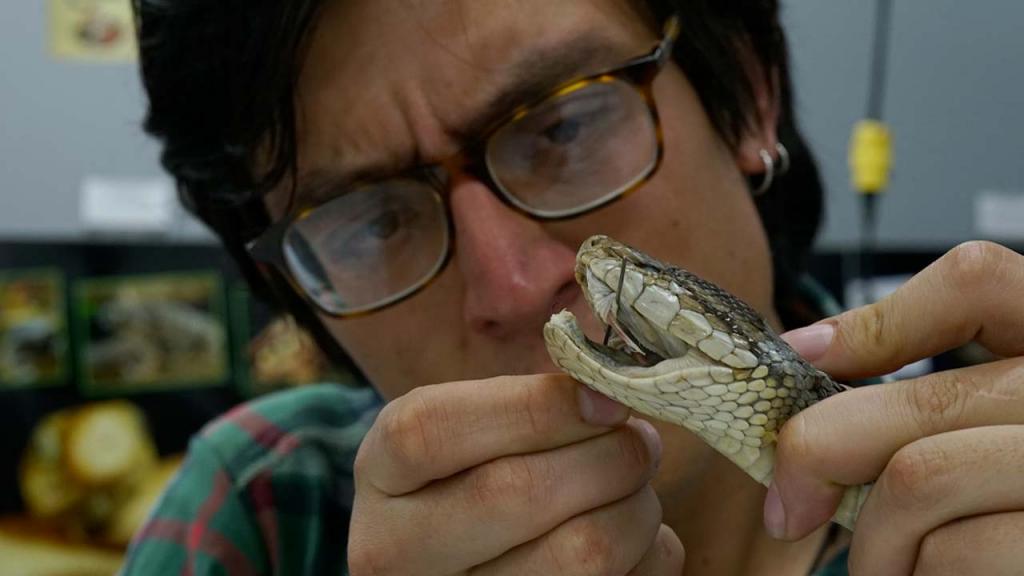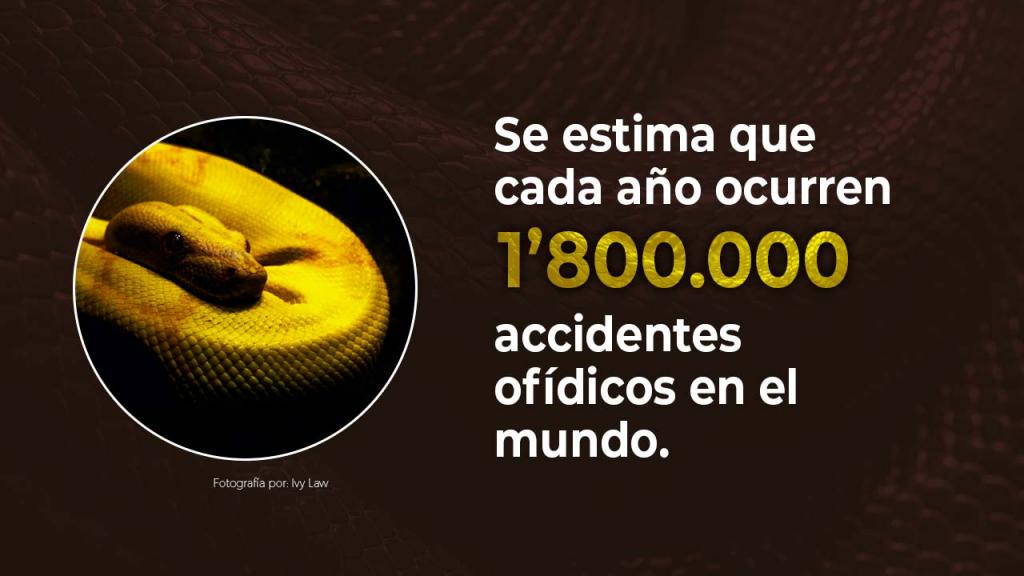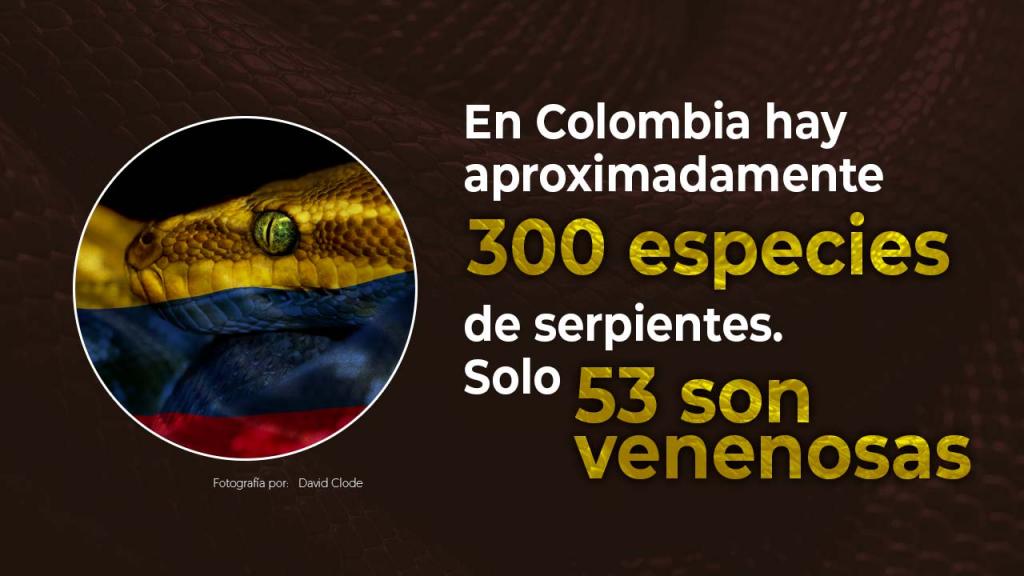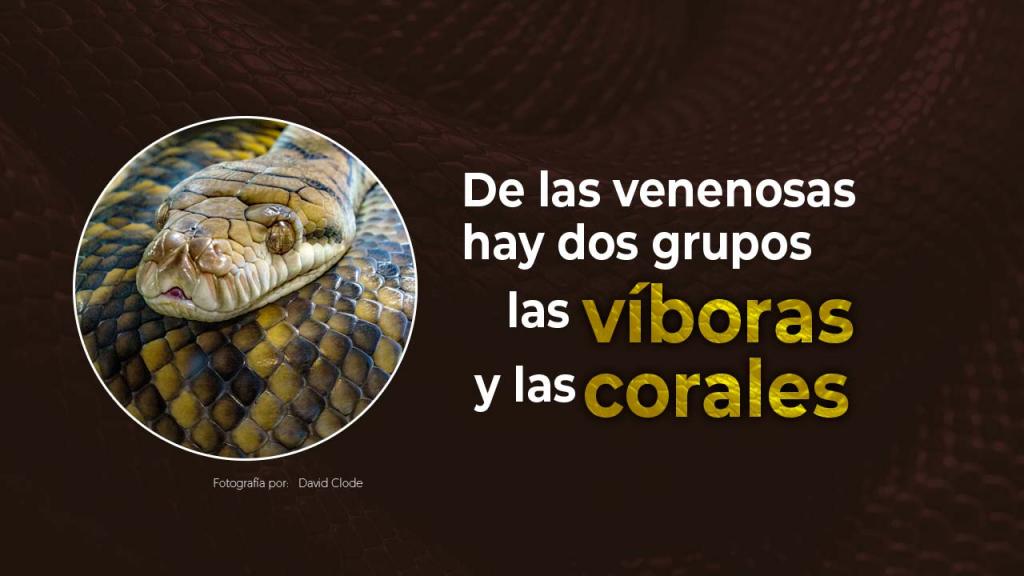Armed with a torch, batteries, a stick, coffee, and something to eat, every night Carlos Andrés Bravo walks five or six hours through vegetation. He goes slowly, measuring his steps and is focused on finding the Talla X—the colloquial name for the Bothrops asper, one of the snakes responsible for the greatest number of poisonings in the country.
He searches in caves, in bushes, and next to rocks. When he finds one, he lifts it up, weighs it, measures it, determines its sex, and then puts it back. He also notes down the time he found it; if it was found near a house or somewhere where another human could stumble across it, he puts it in a bag made of fabric and takes it somewhere where it can continue on its way.
Carlos, who is studying biomedical engineering, has done exactly the same thing for 18 nights in a row. Sometimes he finds “less than one a night”. During his most recent period of exploration, when he spent six nights in Carmen de Apicalá, six in Cunday, and six in Icononzo, which are all towns located on the basin of the Magdalena River, he only found four alive.
This exercise of searching for snakes is part of his doctoral fieldwork. His objective is to create a mathematical model that predicts the affects that ophidian accidents—as snakebites are known—in the country. He then plans to propose an economic model to optimize the distribution of antivenom used to counteract the effects of the venom.
The World Health Organization defines an ophidian accident as a neglected tropical disease that, globally, kills 94,000 people each year and disables another 400,000 as a result of blindness, contractures, restricted mobility, or amputations.
Part of the reason that it is neglected is because of the lack of information on the topic. Only recently in 2007 in Colombia, the National Health Institute, through the National System of Public Health Monitoring, made it mandatory for any medical center or hospital to report snakebites. And with this data, the situation improved substantially. Previously, less than a thousand cases per year were reported; however, ten years later, in 2017, 4,978 were registered in the country.
However, the actual figure could be so much higher than what has been reported as many victims do not even go to medical centers because they are either too far away, the venom takes affect too quickly, and some people do not know there is an antidote in the country that counteracts the effects of the venom. “The problem is that treatment is not where it is most needed”, points out this young researcher to highlight the lack of antidote available in remote regions of the country.

The problem is that treatment is not where it is most needed

Carlos Bravo
PhD student
This is where the importance of his thesis comes in. However, his fieldwork is just one part of what he is trying to do. He will search for snakes at night during six blocks this year so he can understand the variations of snake population that he finds.
He will then cross-reference this information with the human census and use an epidemiological model that is based on the law of mass action—in which two things move simultaneously—that estimates the possibility of encounters between humans and snakes. This will provide a mathematical model that allows the real scale of the problem to be estimated, or the number of snakebites that could occur.
He has already spent a year designing the computational tool, calibrating the methods to count venomous snakes in the field, and the algorithm that will predict the incidence of cases. He did this in Costa Rica, which is also home to the Talla X, and where the information is far more complete. The results are close to being published.
When he finishes his fieldwork in Colombia and cross-references the information with the human census, the record of cases, and variables such as peaks of rain—that have been confirmed to be closely related with an increased number of snakebites—he can create a simulation about how many people are not being treated, evaluate the cost-effectiveness of the treatment, and provide strategies to improve coverage of the antivenom. “It is not only about where it is needed, but also about at which times of the year”, he explains.
What he wants to do is “create a tool that is capable of monitoring snakebites, using which it is also possible to propose prevention campaigns and train medical professionals both of which will reduce the impact on rural populations”. These are the most vulnerable communities in terms of their exposure to snakes and the shortcomings in their healthcare system.
In order to improve prevention, Carlos has also surveyed populations to establish the way that people behave before and after a snakebite and what they know about the subject. This information will be key when creating educative campaigns that, among other issues, help to mitigate the mutual impact caused by humans and snakes living together.
It needs to be said that in the majority of these encounters it is the snakes that end up dead. “People think that they are aggressive, but this is just a bad reputation”, he says insisting on how docile they are. He is also rather worried about their reduction in numbers.
In sum, what he is trying to do with his research is to “save lives”: both human and animal.

It is not only about where it is needed, but also about at which times of the year

Carlos Bravo
PhD student








 The problem is that treatment is not where it is most needed
The problem is that treatment is not where it is most needed 
 It is not only about where it is needed, but also about at which times of the year
It is not only about where it is needed, but also about at which times of the year 


